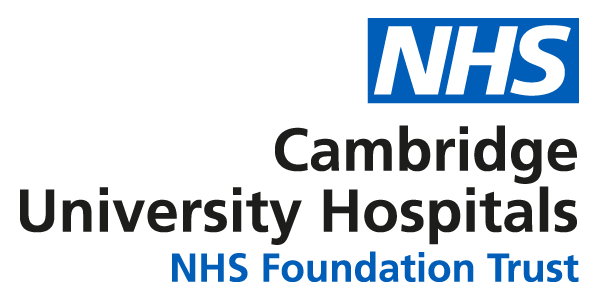Who is this leaflet for?
This leaflet gives advice for parents or guardians of children with adrenal insufficiency or congenital adrenal hyperplasia and includes instructions for the use of liquid Efcortesol vials.
Introduction
It may be necessary in certain situations to give your child an emergency injection of hydrocortisone. These situations include if your child or young person:
- Is unable to take tablets or fluids by mouth (e.g. due to continued vomiting).
- Has severe diarrhoea
- Feels sleepy, drowsy and is difficult to wake up
- Does not feel better after increased tablets for two doses
- Has been involved in a major accident
Dosage
The dose of the injection depends on the age of your child:
- Under 1 year give 25mg (0.25ml of Efcortesol)
- Age 1-5 years give 50mg (0.5ml of Efcortesol)
- Age 6 years and above give 100mg (1ml of Efcortesol)
Equipment Needed
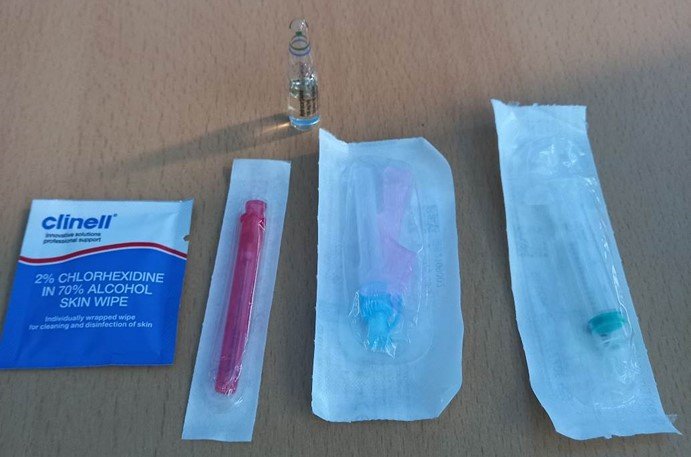
Clinell wipe
2ml syringe
Blue (or orange) needle
Red filter needle
Hydrocortisone ampule
1. Preparing the syringe and needle
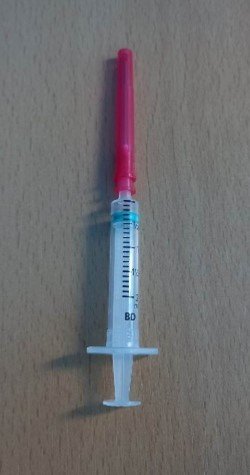
1.1 Remove the syringe from the sterile packet without touching the nozzle of the syringe.
1.2 Carefully remove the red filter needle from the sterile packet and attach it to the nozzle end of the syringe.
2. Opening the hydrocortisone ampoule
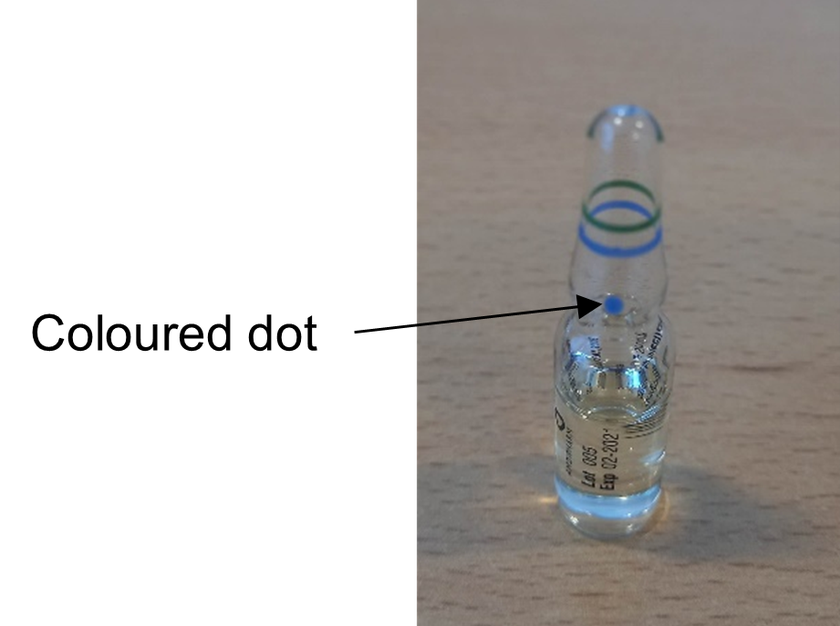
2.1 Holding the ampoule upright, gently tap the top of the bottle to empty any of the hydrocortisone into the barrel of the ampoule.
2.2 Using the empty syringe packet, carefully snap the top off the ampoule. (There should be a coloured dot on the neck of the ampoule, which is the best place to try and break it open). Place the open ampoule on a firm surface.
3. Loading the syringe Part 1
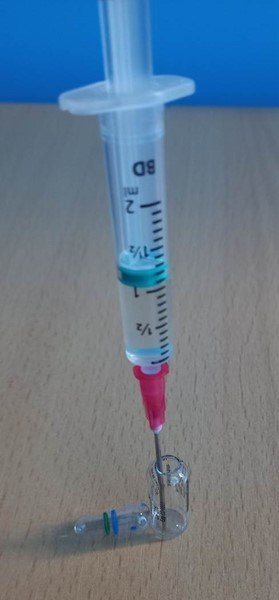
3.1 Remove the needle cover and insert the needle into the open ampoule.
3.2 Carefully suck up the contents of the ampoule into the syringe.
3.3 Remove the needle from the ampoule.
4. Loading the syringe Part 2
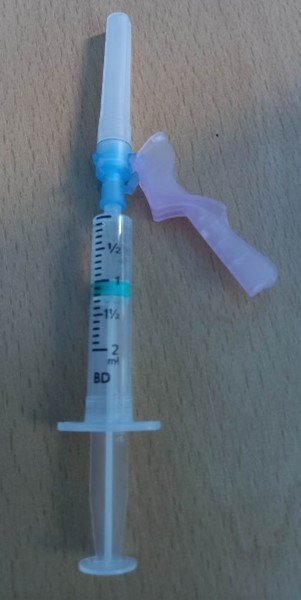
4.1 Remove the red filter needle from the syringe and attach the blue (or orange) giving needle. Remember which needle to use, never give an injection with the red filter needle.
4.2 Turn the syringe so that the needle is pointing upwards.
4.3 Tap the syringe to ensure any air bubbles rise to the top.
4.4 Gently push up the plunger so that any air is expelled from the syringe.
4.5 Gently push up the plunger to expel any excess hydrocortisone so that you have the correct dose for the child.
5. Giving the injection
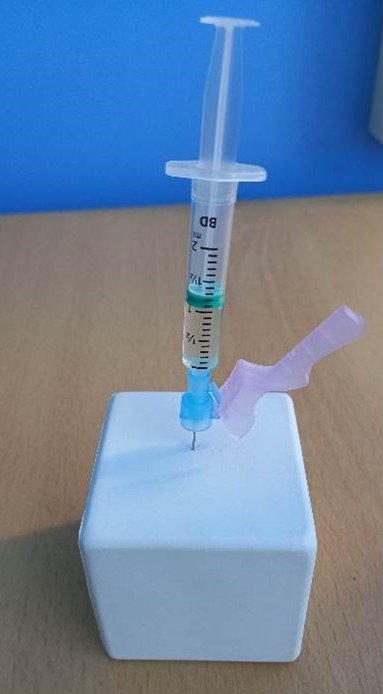
5.1 Your child should be lying down in a safe position.
5.2 The injection should be given into the upper outer thigh or the upper outer aspect of the bottom depending on where you have been shown to give it.
5.3 Clean the skin with the Clinell wipe.
5.4 Place one hand on the surrounding skin.
5.5 Smoothly insert the needle through the skin to a depth of about half the length of the needle.
5.6 Smoothly push down the plunger until the syringe is empty.
5.7 Remove the needle and syringe from the skin and dispose of the needle in a sharps bin if you have one. (If a sharps bin is not available, put the needle in an empty sandwich box or other suitable container and take it with you to hospital where it can be disposed of safely).
5.8 Take the child to your nearest hospital with an emergency department immediately.
Contacts
Please contact the specialist endocrine nurses on 01223 217496 if you need any further advice.
We are smoke-free
Smoking is not allowed anywhere on the hospital campus. For advice and support in quitting, contact your GP or the free NHS stop smoking helpline on 0800 169 0 169.
Other formats
Help accessing this information in other formats is available. To find out more about the services we provide, please visit our patient information help page (see link below) or telephone 01223 256998. www.cuh.nhs.uk/contact-us/accessible-information/
Contact us
Cambridge University Hospitals
NHS Foundation Trust
Hills Road, Cambridge
CB2 0QQ
Telephone +44 (0)1223 245151
https://www.cuh.nhs.uk/contact-us/contact-enquiries/
